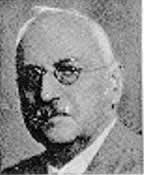Mystery Books
Mystery Movies
Mystery Authors
R. Austin Freeman biography
R.Austin Freeman was born in London in 1862 and died in 1943, in Gravesend, Kent. Freeman began medical training at Middlesex Hospital at the age of eighteen. After being House Physician at Middlesex Hospital, went to the Gold Coast in 1887 as Assistand Colonial Surgeon. He joined a medical expedition to Ashanti and Bontuku in 1889, in which he served as doctor, navigator and naturalist. Nine years later he published his experiences in Travels and Life in Ashanti and Jaman. In 1921 he also published a medico-sociological study entitled Social decay and Regeneration.
Freeman had a distinguished career in Africa before being invalided out of the service following a bout of blackwater fever. For a time he was Medical Officer at Holloway gaol, worked for the Port of London Authority and had a private practice as an ear, nose and throat specialist.
His first Thorndyke story, The Red Thumb Mark, was published in 1907 and shortly afterwards he pioneered the inverted detective story, in which the identity of the criminal is shown from the beginning: some short stories with this feature were collected in The Singing Bone in 1912.
Freeman's breadth of knowledge was reflected in his work; as well as being a medical man he was a keen Egyptologist, geologist and sailor. ("A medical jurist must take all knowledge as his province.") He was also a competent draughtsman, as is shown by the illustrations he made for some of his stories. Many of the stories involve problems of survivorship - who died first? - and forged identity. Hugh Greene wrote, "Always Thorndyke and Jervis seem to be walking through the gas-lit streets of a timeless Edwardian London, though by the time their creator died bombs were falling on the Temple" (Preface to The Rivals of Sherlock Holmes).Some people say that Freeman's writings do not "play fair" with readers, because they do not have Thorndyke's scientific expertise, and therefore do not have the ability to anticipate his deductions and solve the mystery.
Most of Freeman's best and most influential fiction was published during 1909-1912, a four-year period. This includes the superb puzzle plot works "31 New Inn" and The Eye of Osiris, both perhaps founding examples of the Golden Age of Mystery Fiction.
Some of Freeman's early work was published under the pseudonym Clifford Ashdown. A collaborator, Dr John I. Pitcairn, is now thought by some to have been another pseudonym.
Information source: wikipedia
